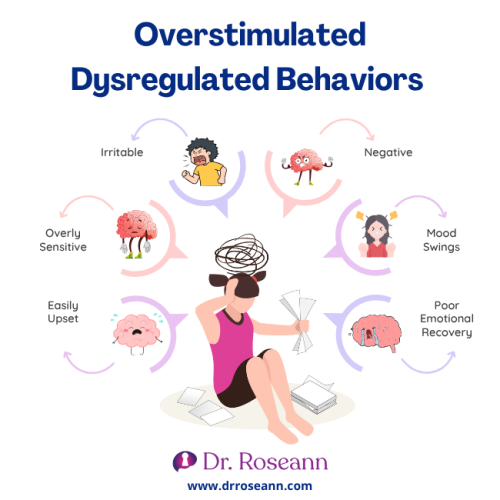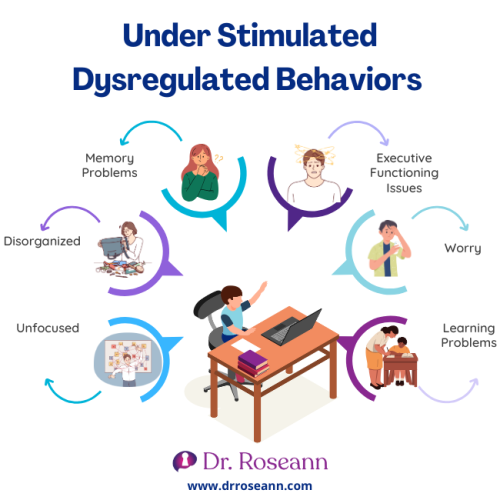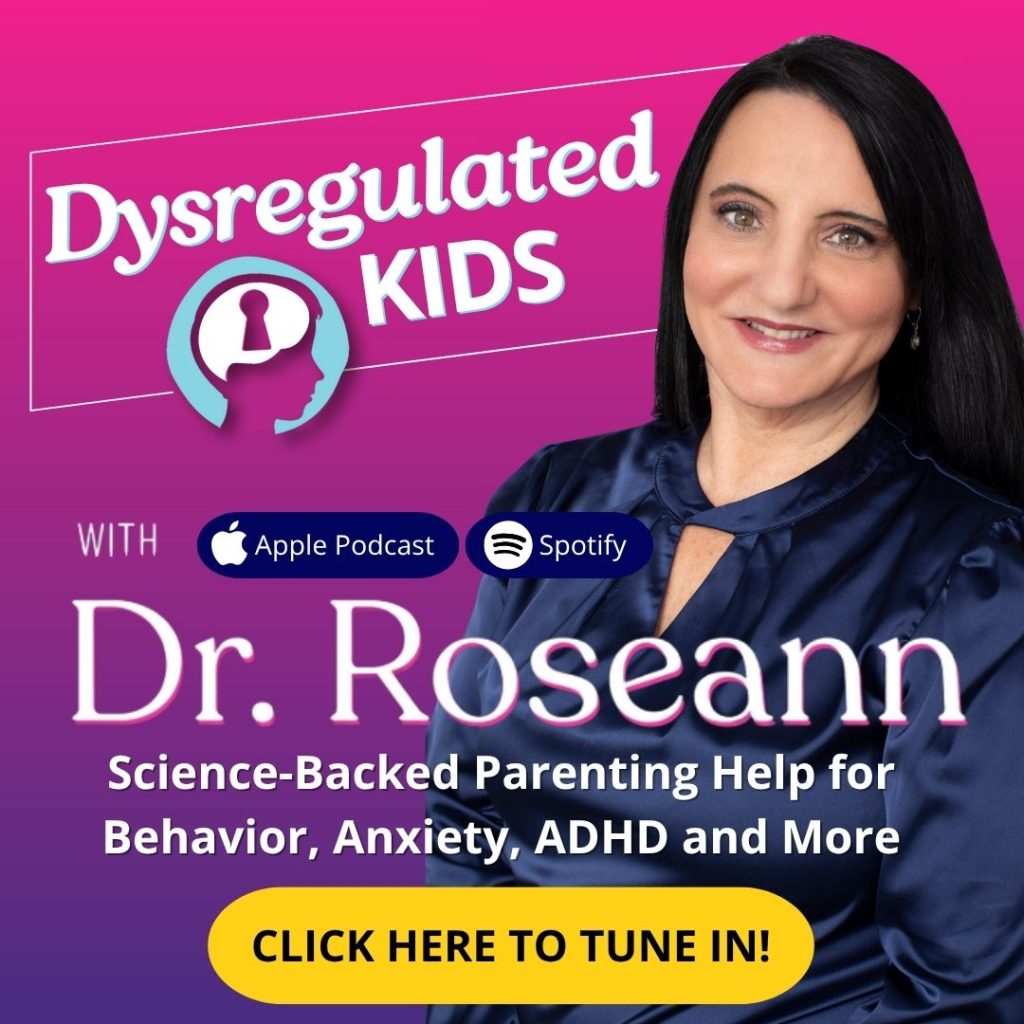Estimated reading time: 8 minutes
When a child is overstimulated or understimulated, their nervous system is out of balance—and that imbalance can look like meltdowns, zoning out, or difficulty focusing.
Parents often describe their kids as being “always on” or “checked out.” These are signs that the brain is struggling to find its regulatory rhythm (Porges, 2022).
Our children’s nervous systems constantly receive input from the environment—sounds, lights, emotions, and even our tone of voice. When the brain can’t efficiently process that input, kids become overstimulated or understimulated. Understanding these states helps parents support calm and connection.
What Is Overstimulation in Children?
Overstimulation happens when too much sensory input overwhelms a child’s brain. Kids may appear anxious, hyperactive, irritable, or emotionally reactive. The body’s stress response (the sympathetic nervous system) goes into overdrive.
Common Signs of Overstimulation
- Restlessness or inability to sit still
- Heightened emotions or irritability
- Tantrums or meltdowns after busy activities
- Trouble sleeping or winding down
- Sensory overload from noise, lights, or crowds
Parent example:
After a weekend birthday party, nine-year-old Ava became clingy and tearful. She wasn’t being “dramatic”—her nervous system simply couldn’t filter all that stimulation.

What Is Understimulation in Children?
Understimulation occurs when a child doesn’t get enough sensory or emotional input to engage their brain. They might appear bored, unmotivated, or withdrawn. The parasympathetic system can dominate, leaving kids sluggish or disconnected (Stephen et al., 2021).
Common Signs of Understimulation
- Low energy or fatigue
- Lack of motivation or engagement
- Excessive screen time or zoning out
- Seeking strong sensations (e.g., spinning, rough play)
- Difficulty starting tasks or showing interest
Parent example:
Ten-year-old Liam seemed “lazy” until his mom realized that quiet, sedentary days left him dysregulated. Once they built in daily movement breaks, his mood lifted.

How to Tell if Your Child’s Nervous System Is Out of Balance
Children with an imbalanced nervous system often fluctuate between overstimulation and understimulation. Parents might notice unpredictable behaviors—one day hyper, the next withdrawn.
Physical clues can include poor sleep, digestive issues, or frequent headaches (Wolff et al., 2023).
| Signs of Dysregulation | Possible Overstimulated Response | Possible Understimulated Response |
| Attention & Focus | Restless, impulsive | Daydreaming, inattentive |
| Emotional Regulation | Tantrums, anger | Flat affect, disinterest |
| Energy Level | Hyperactive, anxious | Tired, lethargic |
| Social Interaction | Overly talkative | Withdrawn, avoids peers |
Why Some Kids Crave Stimulation While Others Shut Down
Every child has a unique sensory threshold—how much input their nervous system can comfortably process. Some kids are sensory seekers, craving movement and excitement. Others are sensory avoiders who prefer calm, predictable environments (Dunn, 2022).
These differences aren’t behavioral problems but neurological ones. When parents understand their child’s sensory profile, they can prevent meltdowns and promote balance.
Causes of Nervous System Dysregulation in Children
Dysregulation can stem from many factors:
- Chronic stress or trauma
- Poor sleep or inconsistent routines
- Nutrient deficiencies
- Too much screen time
- Sensory overload from busy environments
Recent studies show that modern stressors—from digital overstimulation to emotional stress—have a measurable impact on children’s brain development (Ziegler et al., 2022). The nervous system becomes “stuck” in fight, flight, or freeze.
How Overstimulation or Understimulation Affect Behavior and Learning
An imbalanced nervous system interferes with executive functioning—the skills needed for focus, organization, and emotional control. Overstimulated kids may act impulsively or resist transitions, while under stimulated kids often seem unmotivated (Henderson et al., 2021).
Teachers may misinterpret dysregulation as inattention or defiance. When the brain feels unsafe or under-activated, learning takes a backseat.
Brain Science Spotlight
Recent neuroimaging research from the University of Wisconsin found that dysregulated children show altered connectivity between the amygdala and prefrontal cortex—regions responsible for emotion and self-control (Thompson et al., 2023).
Dr. Thompson notes, “The more reactive the stress system, the harder it is for kids to access calm and focus.” This explains why a child who seems “defiant” may actually be neurologically overwhelmed.
What this means for your family:
When you support regulation through structure, routine, and sensory input, you help your child’s brain rewire toward calm.
How to Help Your Overstimulated or Understimulated Child Calm Down
Supporting regulation starts with observing patterns—when your child is at their best and when meltdowns occur. Use that data to adjust their sensory diet.
Regulation Strategies
- Maintain predictable routines
- Encourage physical movement and outdoor play
- Limit screens, especially before bed
- Practice co-regulation: slow breathing, gentle tone, and connection
- Use sensory tools like weighted blankets or fidget toys
Dr. Roseann’s Therapist Tip
In my 30+ years of clinical practice, I’ve learned that nervous system regulation builds from daily habits—not quick fixes. Try this today: create consistent bedtime and wake-up times for your child. Why it works: Regular sleep patterns strengthen the parasympathetic system, improving mood and focus. Remember: small, steady steps rewire the brain toward calm.
When to Seek Professional Help for Your Child’s Dysregulation
If your child’s behaviors persist despite routine changes, or if anxiety, mood swings, or academic challenges intensify, it may be time for professional support. Therapies such as neurofeedback, occupational therapy, and cognitive-behavioral approaches can help regulate the brain and body (Miller et al., 2024).
Parent Action Steps
FAQs
How do I know if my child is overstimulated or just tired?
Tiredness resolves with rest; overstimulation lingers. If your child remains edgy or emotional even after downtime, it’s likely nervous system overload.
Can a child be both overstimulated and understimulated?
Yes. Many kids alternate between states throughout the day, especially those with ADHD or sensory processing differences.
What activities help regulate a child’s nervous system?
Rhythmic movement, predictable routines, deep breathing, and sensory play all promote balance and calm.
When should I worry about sensory issues?
If sensory sensitivity disrupts school, sleep, or relationships, consider a professional evaluation to explore underlying causes.
Citations
Dunn, W. (2022). Sensory Processing Framework and Its Application in Pediatrics. American Journal of Occupational Therapy, 76(4), 1–12. https://doi.org/10.5014/ajot.2022.046132
Henderson, S. E., Sugden, D. A., & Barnett, A. L. (2021). Developmental coordination disorder and self-regulation in children. Child Neuropsychology, 27(3), 325–342. https://doi.org/10.1080/09297049.2021.1898670
Miller, L. J., Nielsen, D. M., & Schoen, S. A. (2024). Occupational therapy interventions for sensory modulation disorders in children. Journal of Occupational Therapy Research, 44(2), 101–114. https://doi.org/10.1016/j.jotr.2024.02.005
Thompson, L. M., et al. (2023). Amygdala-prefrontal connectivity and emotional regulation in children. Journal of Neuroscience, 43(15), 2728–2739. https://doi.org/10.1523/JNEUROSCI.2023-03-15
Wolff, J. J., et al. (2023). Physiological correlates of emotional dysregulation in children. Frontiers in Human Neuroscience, 17, 1028743. https://doi.org/10.3389/fnhum.2023.1028743
Ziegler, D. A., et al. (2022). Digital overstimulation and cognitive outcomes in school-age children. Pediatrics, 150(3), e20220571. https://doi.org/10.1542/peds.2022-0571
Dr. Roseann Capanna-Hodge is a licensed mental health expert that is frequently cited in the media:
- The Experience Miracles Podcast Why Traditional Discipline Fails Dysregulated Kids (And What Actually Works)
- Next Avenue Recharge Your Mind With Daily Brain Exercises
- Exhausted to Extraordinary Parent (Video) How to Build a Resiliency Mindset In Your Child – In Just 7 Minutes
Always remember… “Calm Brain, Happy Family™”
Disclaimer: This article is not intended to give health advice, and it is recommended to consult with a physician before beginning any new wellness regimen. The effectiveness of diagnosis and treatment varies by patient and condition. Dr. Roseann Capanna-Hodge, LLC, does not guarantee specific results.
Are you looking for SOLUTIONS for your struggling child or teen?
Dr. Roseann and her team are all about science-backed solutions, so you are in the right place!
©Roseann Capanna-Hodge











